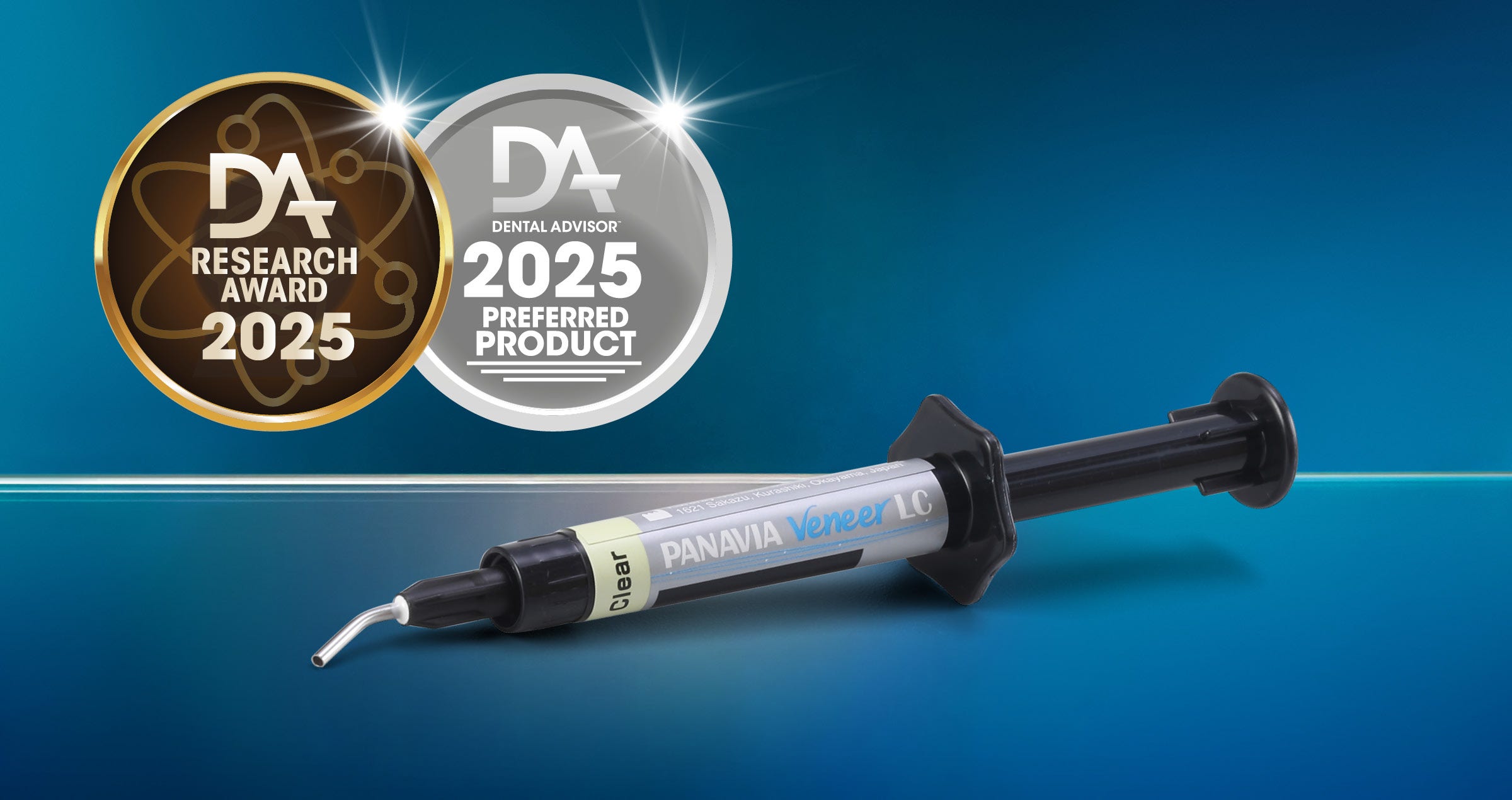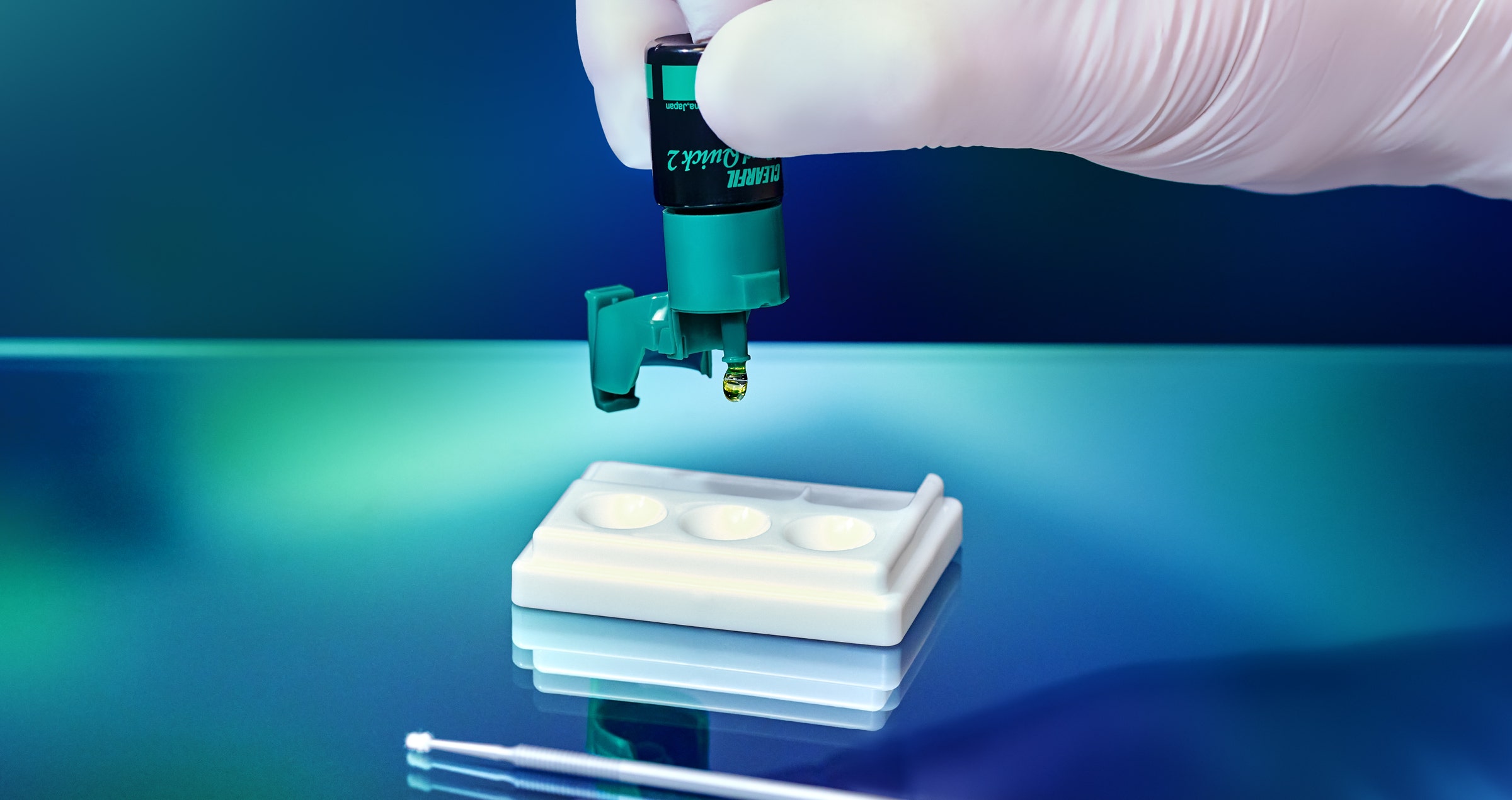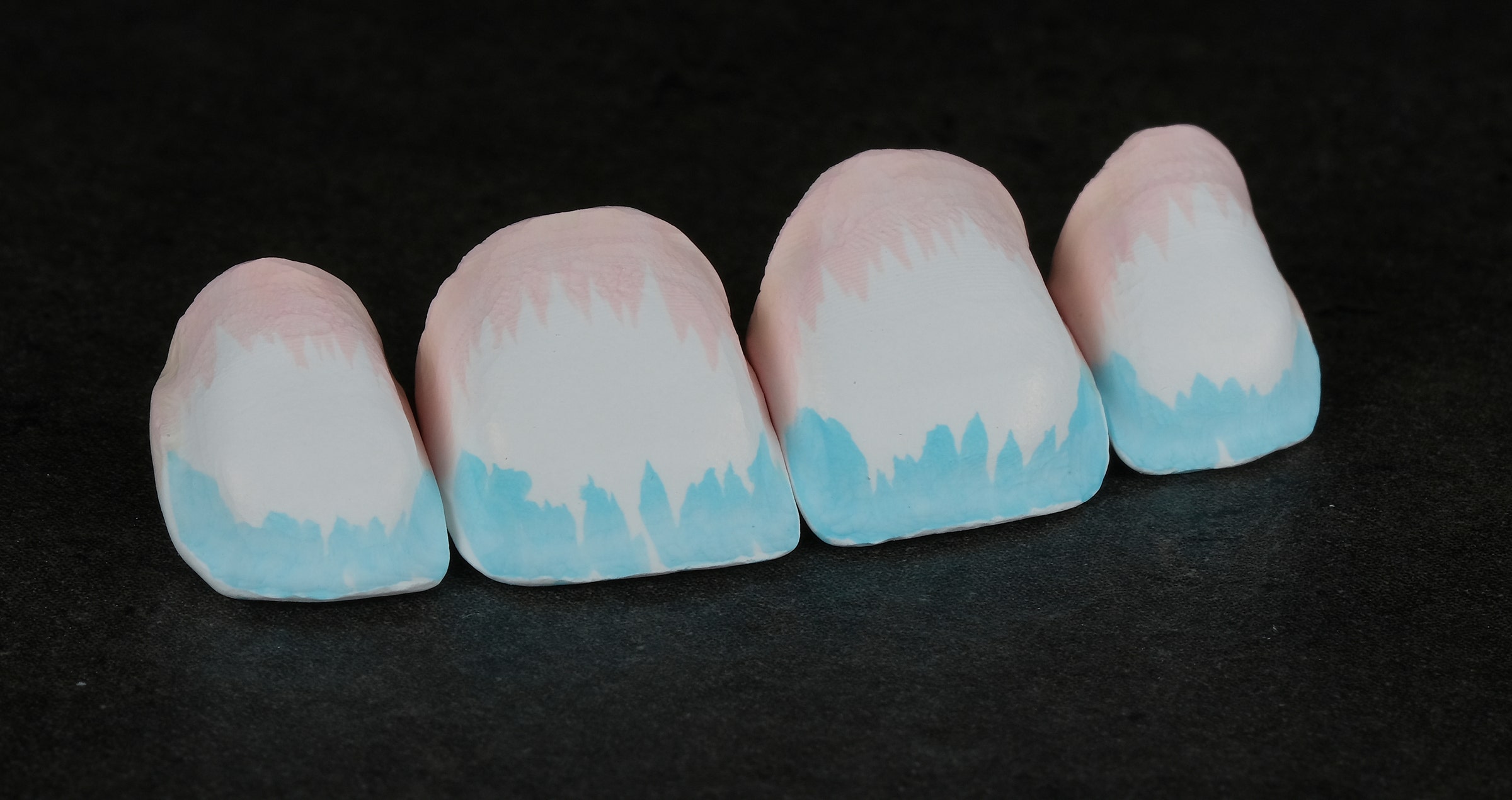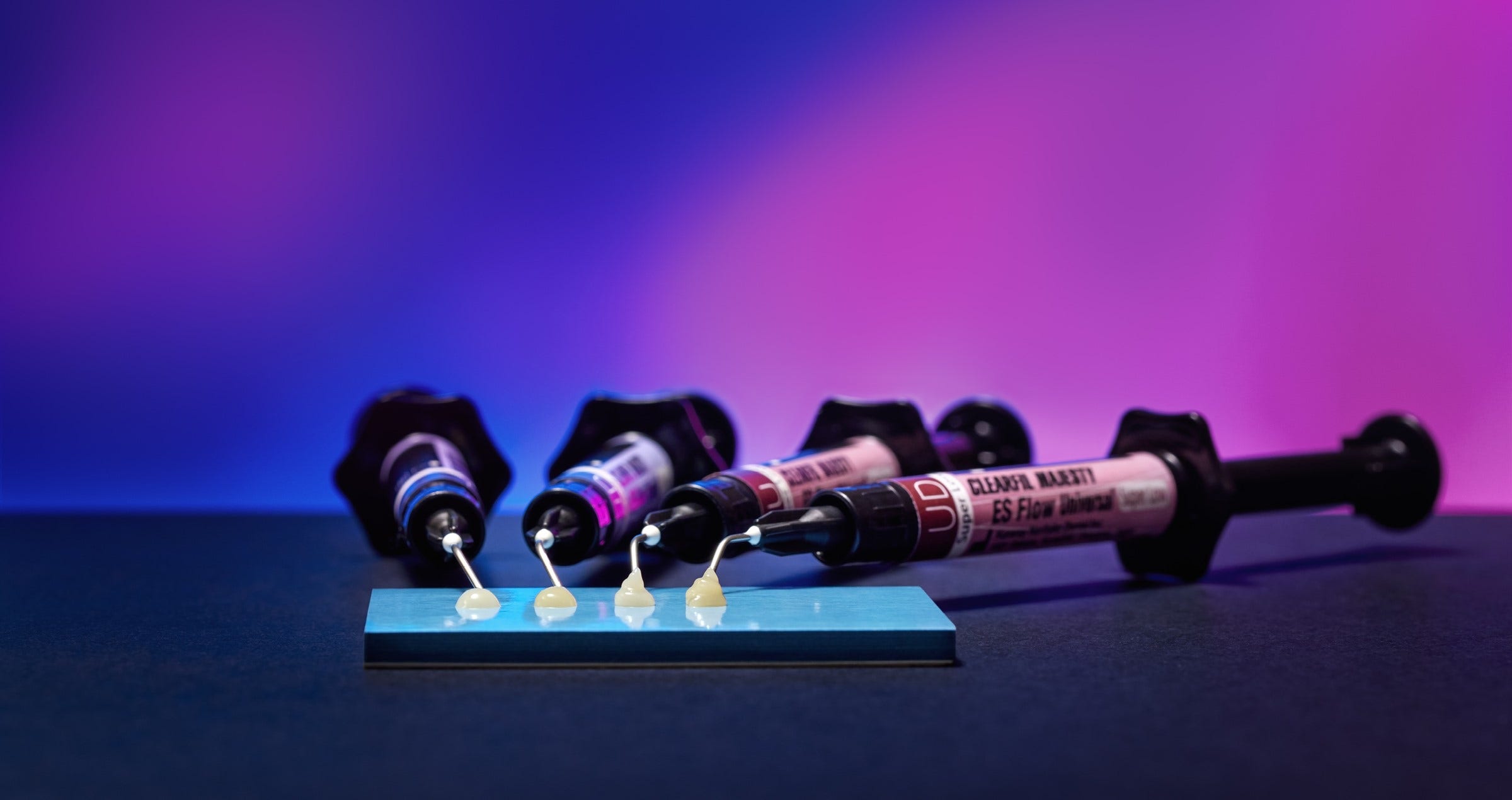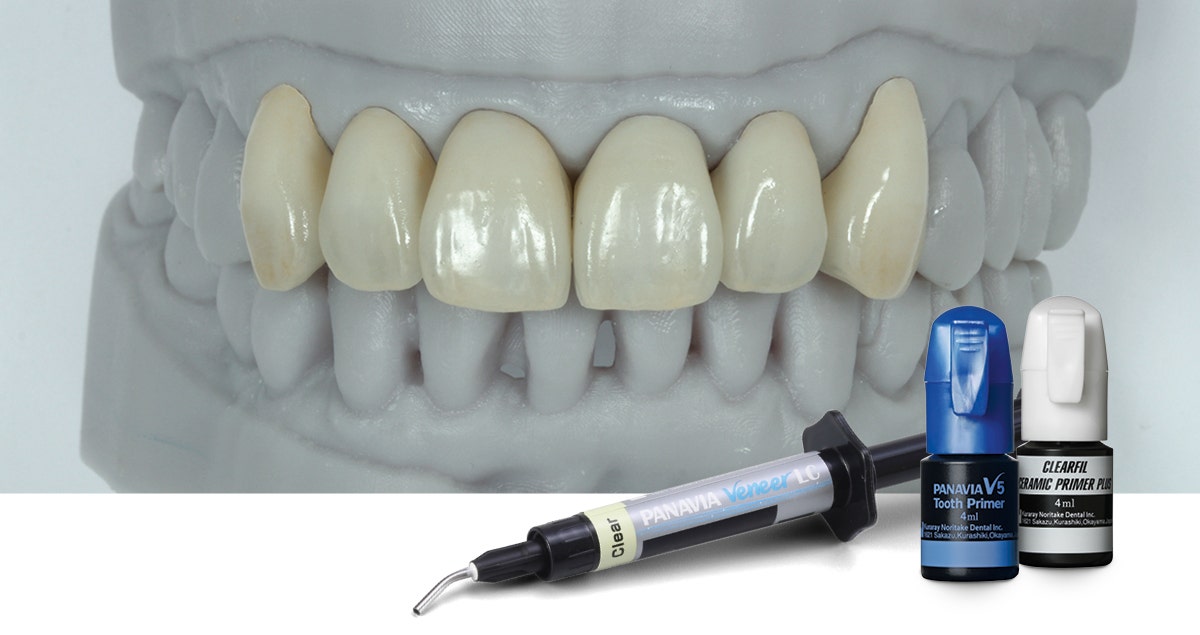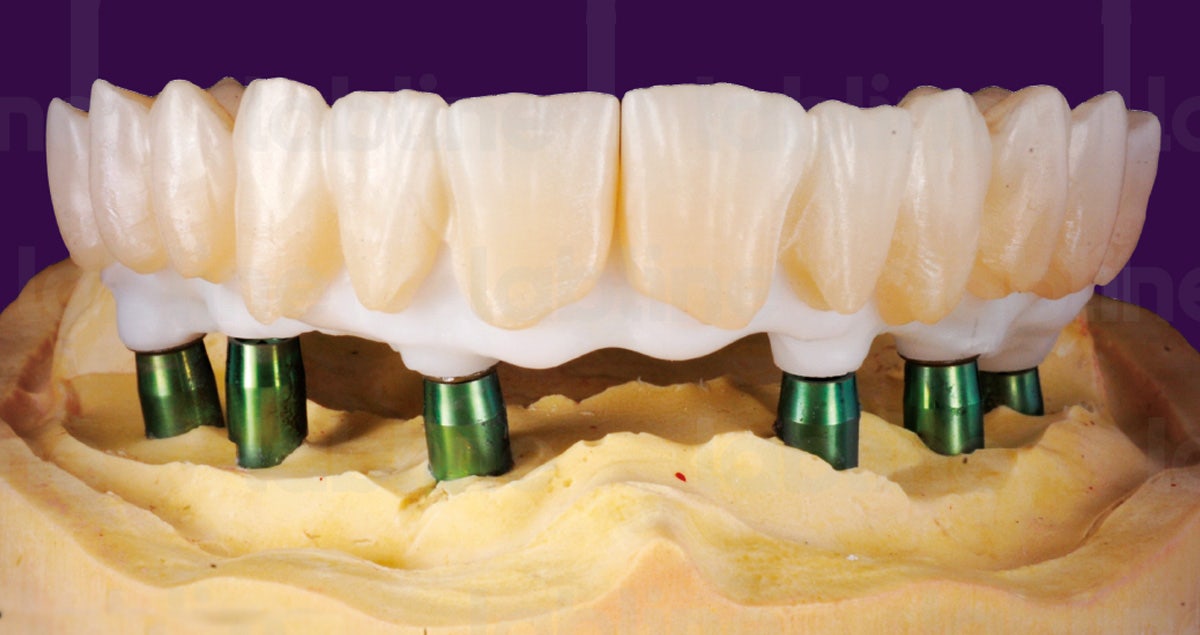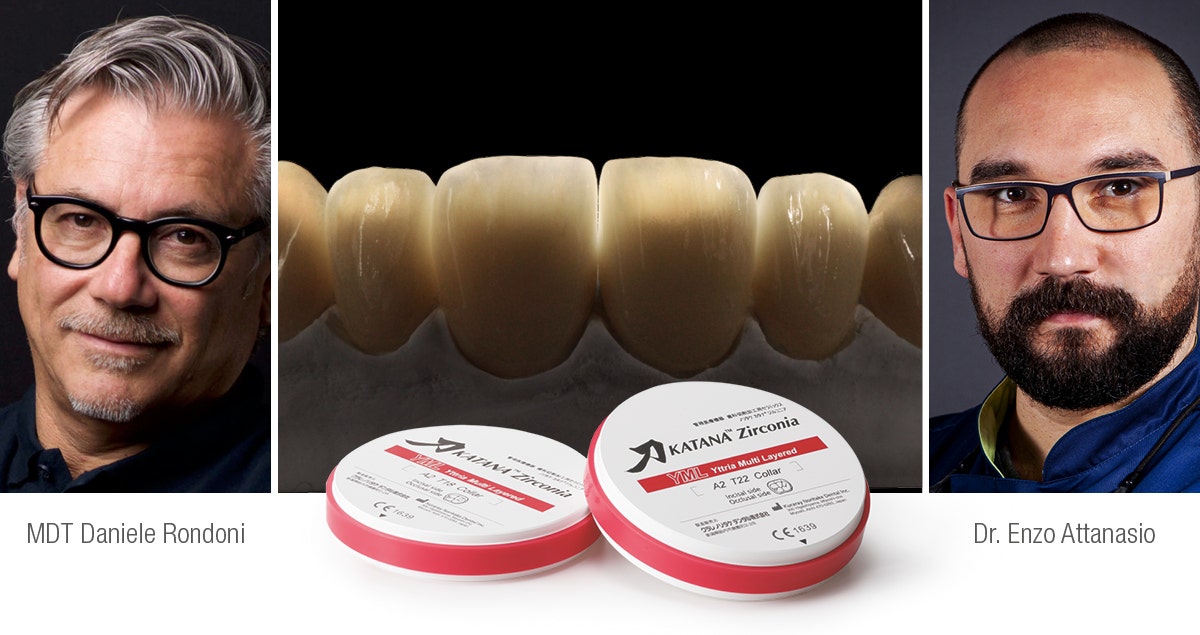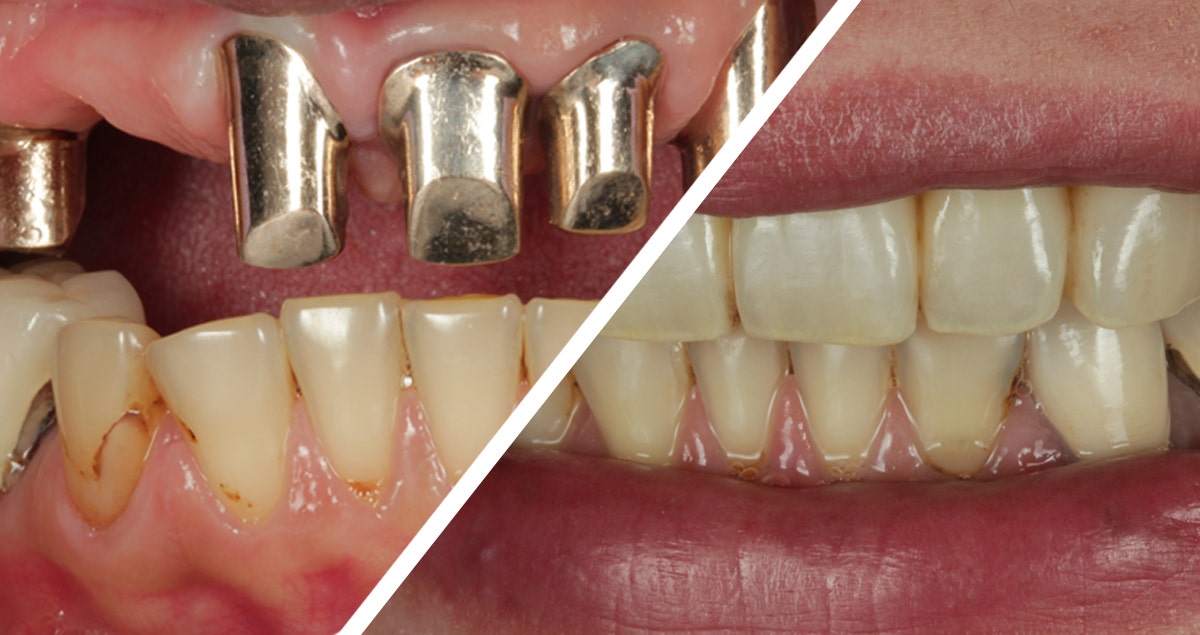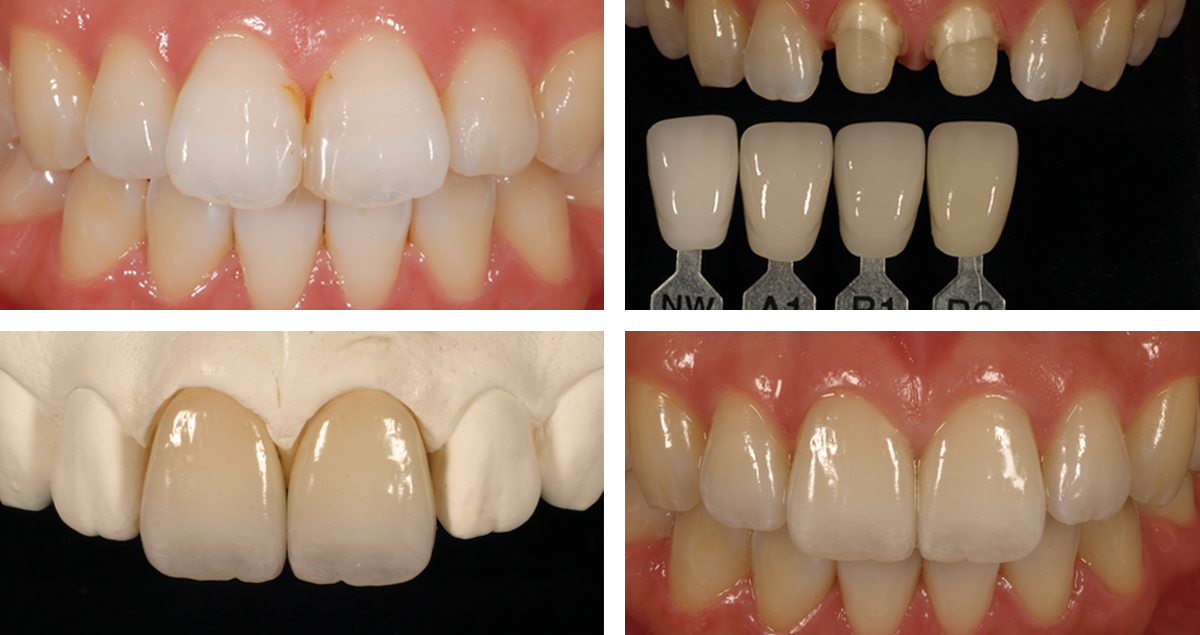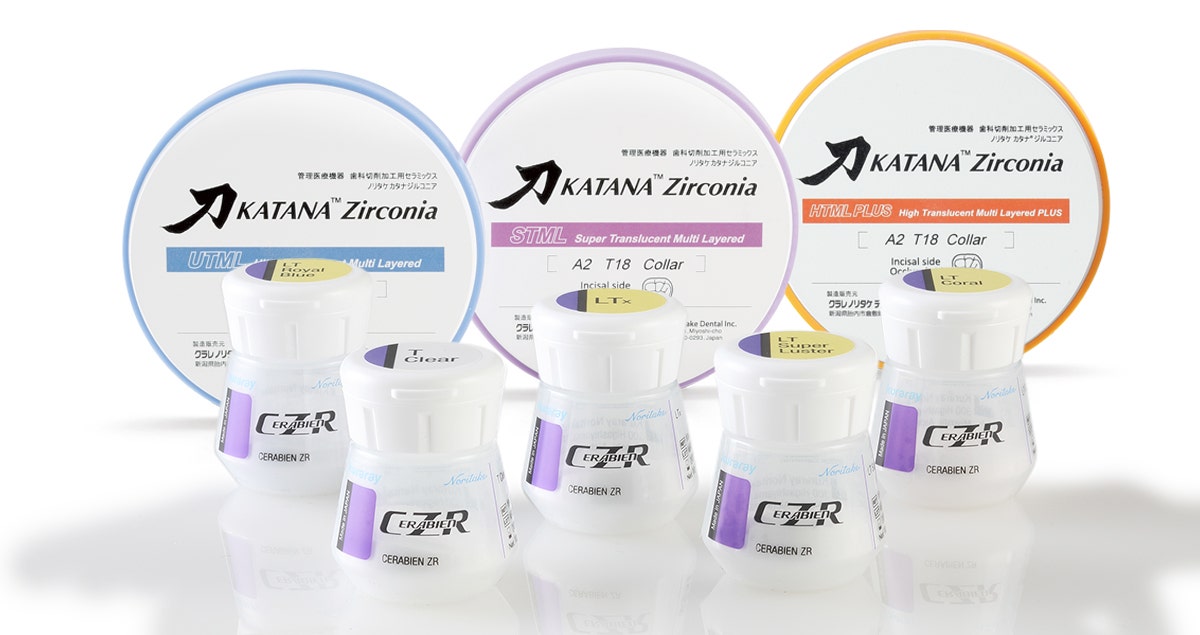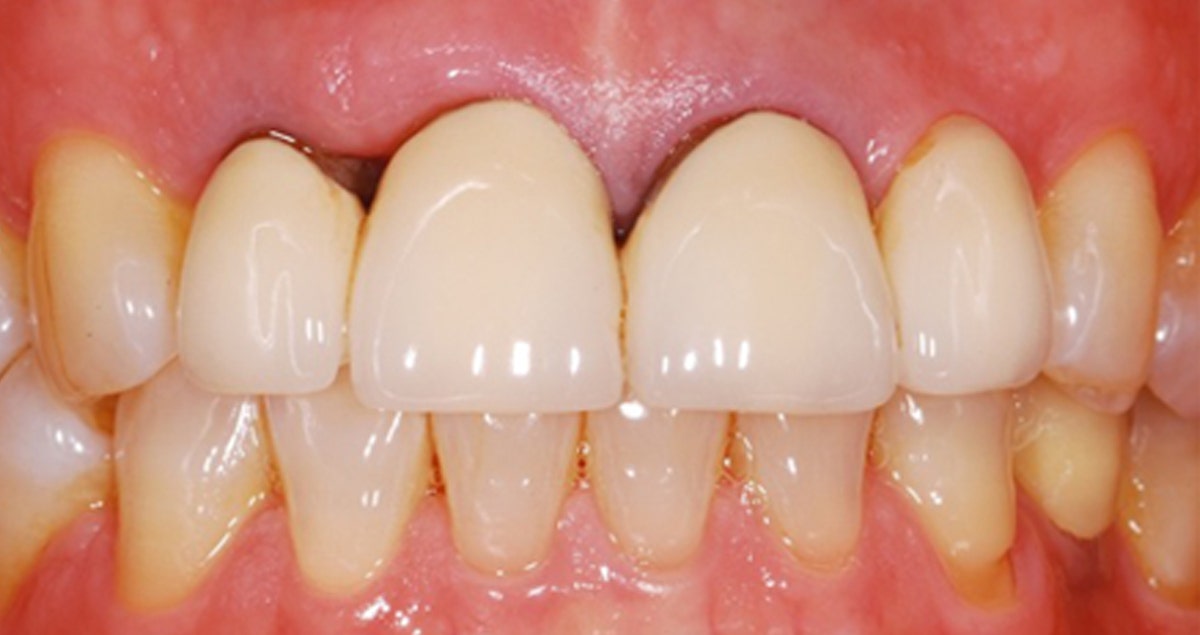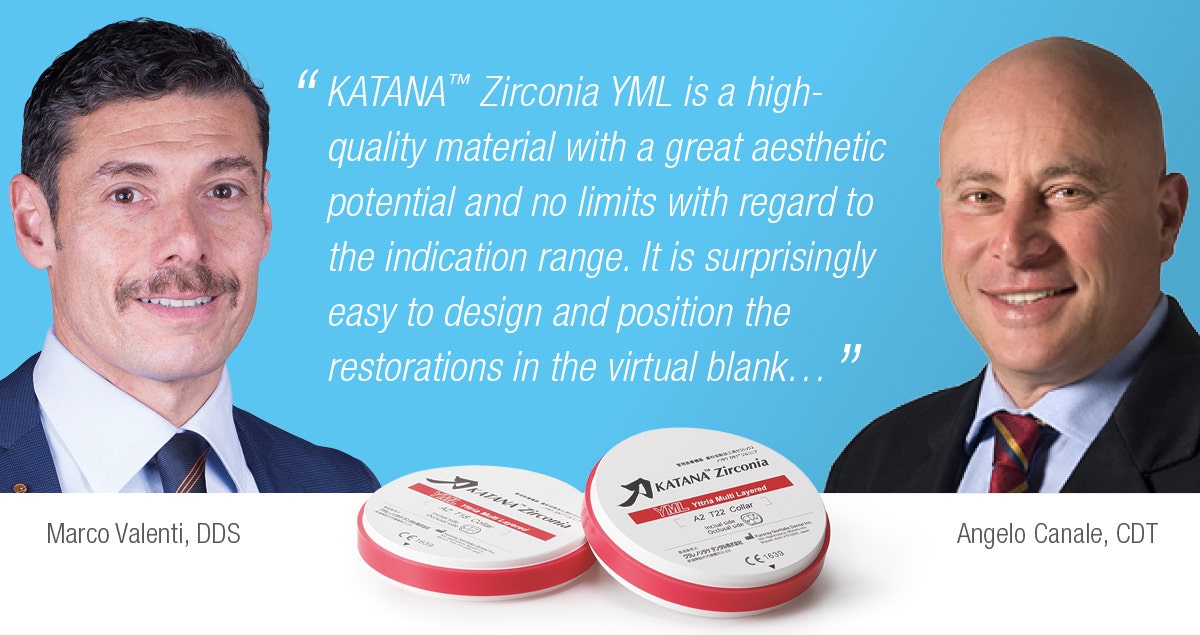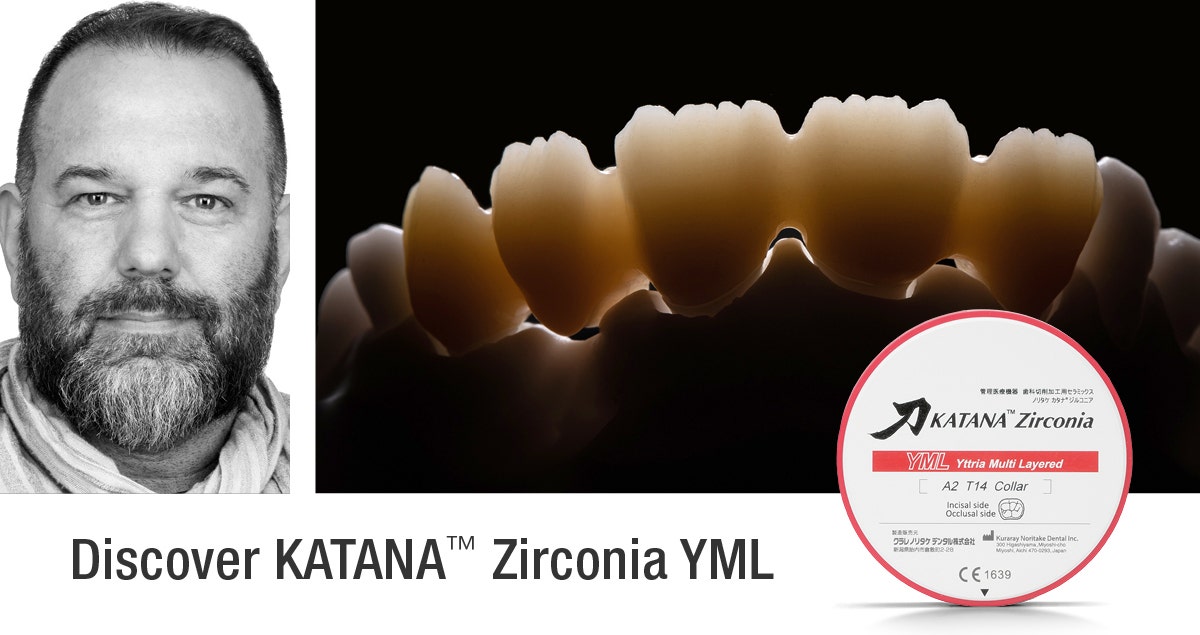Case by Marco Valenti, DDS and Angelo Canale, CDT
When dental zirconia evolved into a highly aesthetic material suitable for the production of restorations with a monolithic design or minimal labial cutback, the amount of hand work (ceramic layering) was reduced. At the same time, however, every dental laboratory needed to have more blanks available, and the need for an indication-specific material selection complicated the planning process.
Some dental technicians love to play with different blanks and with a combination of automated and manual work steps to exactly meet the patient and indication-specific needs. Others, however, would like to take a faster and more standardized path to beauty. For the latter group, Kuraray Noritake Inc. has just introduced a true allrounder. KATANA™ Zirconia YML is based on newly developed raw materials with different yttria content integrated into the company’s multi-layer colour structure. As a consequence, KATANA™ Zirconia YML offers colour, translucency and strength gradation throughout the blank, resulting in an unlimited indication range.
That sounds promising, but does it really work in the laboratory and clinical environment? Are there any hidden challenges with regard to designing and manufacturing? And how beautiful are the outcomes? In order to assess the material’s properties in real life and to see how it performs in our hands, we decided to select a complex case and run a clinical test.
INITIAL SITUATION AND TREATMENT PLAN
This female patient was concerned about the aesthetics of her maxillary anterior teeth (Figs. 1 and 2). Several porcelain-fused-to-metal crowns in the anterior (both central incisors) and posterior region (three premolars) had unsightly dark margins and an unnaturally opaque core. The adjacent natural teeth appeared more translucent and their look was compromised by several composite restorations with discoloured margins. A missing right first molar had caused second molar to drift mesially (Fig. 3). In addition, the left canine was missing, but the space had been closed (Fig. 4). Figure 5 provides an occlusal view of the pre-operative situation.
Fig. 1. Facial view of the pre-operative clinical situation.
Fig. 2. Frontal intraoral view of the patient’s teeth.
Fig. 3. Lateral view of the upper and lower right quadrant.
Fig. 4. Lateral view of the upper and lower left quadrant.
Fig. 5. Occlusal view of the maxillary teeth.
All restorations in the maxilla needed to be replaced, and the patient set great value on a long-lasting aesthetic improvement of the situation. Hence, an all-ceramic material needed to be selected. An orthodontic correction of the malocclusion prior to restorative treatment was not an option, so that the restorations needed to be adjusted to the existing clinical situation. In order to provide for a smooth optical integration, we decided to use a single material for all restorations from the incisors up to the second premolars. This was a great chance to put the new KATANA™ Zirconia YML to a test! It was planned to use the material monolithically with zero cutback and to just paint on an ultra-thin layer of liquid ceramics (CERABIEN™ ZR FC Paste Stain).
CLINICAL PROCEDURE
The old restorations were removed and tooth preparation was carried out (Fig. 6). A minimally-invasive structure removal is supported by the fact that KATANA™ Zirconia YML has a minimum wall thickness of just 0.4 mm in the anterior and 0.5 mm in the posterior region. Then, a digital impression was taken with 3Shape TRIOS 3 (Fig. 7). The acquired data was matched with photographs of the patient’s face to design a virtual wax-up (Fig. 8) and mill a temporary restoration in the dental laboratory. The placement of this temporary allowed for an aesthetic and functional assessment as well as a clinical test drive of the planned definitive restorations (Fig. 9). In this set-up, the left first premolar took over the function and shape of the missing canine. The fact that the gingival margin was slightly higher in the region of the right compared to the left central incisor did not bother the patient, so that an alignment (gingivectomy) was not necessary.
Fig. 6. Situation after tooth preparation with a heavily discoloured central incisor.
Fig. 7. Digital impression taken after tooth preparation.
Fig. 8. Smile design for the production of the temporary.
Fig. 9. Temporary restoration in place.
PRODUCTION OF THE FINAL RESTORATIONS
After successful completion of the test drive, a digital impression was taken with the temporary in place (Fig. 10). Based on this impression and the information acquired during the test drive, four full-contour crowns, two partial crowns and one bridge were designed (Fig. 11 to 13). The bridge in the region of the right first premolar to first molar had a small cantilever pontic to fill the reduced space of the missing first molar.
The restorations were milled from KATANA™ Zirconia YML. Despite the varying levels of flexural strength within the blank, virtual positioning of the restorations in the disc is extraordinarily easy. For the restorations produced in this case, it is only necessary to respect the minimum wall thickness and connector cross section recommended by the manufacturer. When long-span restorations (with more than three units) are planned, half of the connector cross sectional area needs to be positioned in the lower half of the blank. This is the case if a restoration is placed in the middle of the disc, independent of its size.
Fig. 10. Digital impression taken with the temporary restoration in place.
Fig. 11. Computer-aided design of the final restorations.
Fig. 12. Aesthetic assessment of the virtual design.
Fig. 13. Functional assessment of the virtual design.
FINISHING
Figures 14 and 15 show the sintered restorations on the resin models after the addition of individual textural features with hand instruments. A seamless multi-layer structure without transition lines and with a warm body area is obtained. For an even more natural appearance, some individual effects and glaze were added using the CERABIEN™ ZR FC Paste Stain kit from Kuraray Noritake Dental Inc. (Fig. 16 to 19).
Fig. 14. Frontal view of the restorations on the resin models.
Fig. 15. Occlusal view of the restorations.
Fig. 16. Frontal view of the final restorations.
Fig. 17. Lateral view showing the bridge and the anterior crowns in the first quadrant.
Fig. 18. Lateral view showing the crowns in the second quadrant.
Fig. 19. Occlusal view of the lifelike restorations.
TREATMENT OUTCOME
The restorations were placed with the adhesive cementation system PANAVIA™ V5 (Kuraray Noritake Dental Inc.). Figure 20 shows the treatment outcome immediately after cementation. The material masks the discolouration of the underlying tooth structure very well and offers a nice translucency in the incisal area.
FINAL SITUATION
Fig. 20. Treatment outcome.
A TRUE ALLROUNDER
Our test project confirmed that KATANA™ Zirconia YML is a high-quality material with a great aesthetic potential and no limits with regard to the indication range. It is surprisingly easy to design and position the restorations in the virtual blank and after milling, the surfaces are smooth, the margins are sharp and stable, and the fit is accurate. Micro-layering with paste stain is often sufficient for lively outcomes. This makes the new KATANA™ Zirconia YML the material of choice for anyone placing great value on a high level of automation, the standardization of laboratory workflows and efficient and easy procedures.
Dentists:
|
|
| MARCO VALENTI, DDS |
ANGELO CANALE, CDT |


